2018
Frantisek and Rona attended the International Federation of Placenta Associations Conference (Tokyo, Japan - September 2018). During this meeting, Frantisek and Rona presented their results in the form of poster presentation.
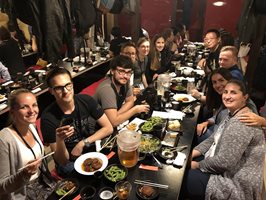
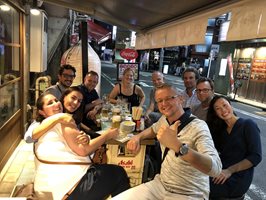
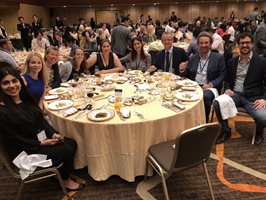
2016
- Daniela Cihalova and Zuzana Neumanova-Ptackova presented their theses with flying colors and became Ph.D. - congratulations and best luck in your future!!!
- Our grant application at Czech Science Foundation (Interactions of protein kinase inhibitors with drug transporters and biotransformation enzymes; role in overcoming resistance in anticancer therapy) was approved!!!
- Rona Karahoda and Pavla Podzimkova are joining our group as new Ph.D. students - welcome and good luck :)
2015
- Paper on Dinaciclib interactions with human ABCB1, ABCG2 and ABCC1 published in Biochemical Pharmacology 2015
- Paper on the role of drug efflux transporters on placental transport of antiretroviral agent abacavir published in Reproductive Toxicology 2015; 57, 176-182.
- Paper on interactions of cyclin-dependent kinase inhibitors AT-7519, flavopiridol and SNS-032 with ABCB1, ABCG2 and ABCC1 transporters and their potential to overcome multidrug resistance in vitro published in Cancer Chemotherapy and Pharmacology 2015; 19 May 2015; (76(1), 105-116.
- Review article on Regulation of drug transporter expression and function in the placenta published in Expert Opinion on Drug Metabolism and Toxicology 2015; 11(4), 533-555.
- Paper titled Placental passage of olomoucine II, but not purvalanol A, is affected by p-glycoprotein (ABCB1), breast cancer resistance protein (ABCG2) and multidrug resistance-associated proteins (ABCCs) published in Xenobiotica 2015
- RNDr. Jakub Hofman, Ph.D. re-joins our group after his postdoc period! Welcome back :)
2014 January
- Our study titled Interactions of tenofovir and tenofovir disoproxil fumarate with drug efflux transporters ABCB1, ABCG2, and ABCC2; role in transport across the placenta was published in AIDS 2014; 28 (1):9-17!
2013 December
- Our latest paper titled - Purvalanol A, Olomoucine II and Roscovitine Inhibit ABCB1 Transporter and Synergistically Potentiate Cytotoxic Effects of Daunorubicin In Vitro - got published in PLOS One - it is an open access paper, feel free to download the PDF.
2013 October
- Our study on Interactions of TFV and TDF with drug efflux transporters ABCB1, ABCG2, and ABCC2; role in transport across the placenta to be published in AIDS!
2013 August

Martina Ceckova, Ken-Ichi Inui, Frantisek Staud, Veronika Rozehnal, Katja Damme at the top of Piz Corvatsch
2013 June
Our dear PhD student, Davoud Ahmadimoghaddam, succesfully presented his doctoral thesis titled Organic Cation Transporter 3 (OCT3/SLC22A3) and Multidrug and Toxin Extrusion 1 (MATE1/SLC47A1) Protein in the Placenta: Expression, Localization and Function and earned his Ph.D.
Well done, Dave, congratulations!
To see Davoud´s doctoral dissertation, click here.
2013-06-28
Review paper on MATE transporter published in The International Journal of Biochemistry & Cell Biology:
Multidrug and toxin extrusion proteins (MATE/SLC47); role in pharmacokinetics
by Frantisek Staud, Lukas Cerveny, Davoud Ahmadimoghaddam, Martina Ceckova
www.ncbi.nlm.nih.gov/pubmed/23831838
List of key facts about MATE transporters:
• recently discovered secondary active efflux transporters
• mediate, in collaboration with organic cation transporters, renal and biliary excretion of organic cations
• affect pharmacokinetics and toxicokinetics of various compounds
• over 40 clinically used drugs are substrates/inhibitors of MATEs
• drug-drug interactions and polymorphisms may result in drug toxicity
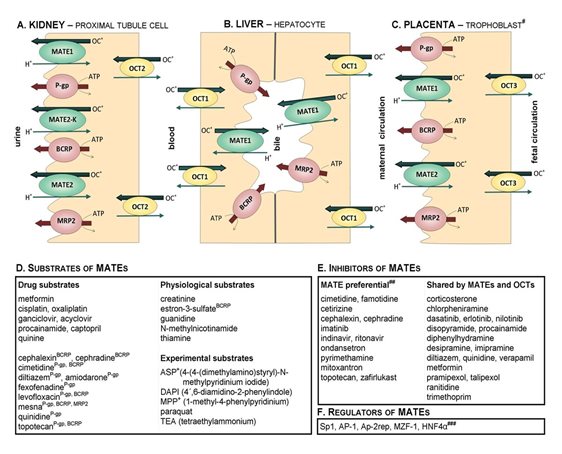
Schematic depiction of MATE expression and activity in the kidney (A), liver (B) and placenta (C). This figure shows the coordinated activity of MATEs and OCTs in transcellular passage of organic cations (OC+) as well as collaboration between MATE and ABC transporters on the apical membranes (see text for details). Selected substrates of MATEs including clinically used drugs, endogenous molecules and experimental compounds (D), as well as MATE inhibitors (E) and currently known regulators (F) are shown. Superscripts in box D indicate the ABC efflux transporters that may participate in apical transport (P-gp, P-glycoprotein; BCRP, breast cancer resistance protein; MRP2, multidrug resistance-associated protein 2).
#Functional expression of placental MATEs and their collaboration with OCT3 transporter has been described in rat. In human placenta, MATE1, MATE2 and OCT3 expression has been shown; however, their role in vectorial transport of cations remains to be elucidated.
##A substance was considered as preferential MATE inhibitor in case its reported inhibitory IC50 values for MATE1 or MATE2-K-mediated efflux were at least 5 times lower than those for OCT1-3 transporters.
###described in mice
2013-05-24
The news of the year - PharmDr. Martina Ceckova, Ph.D., a dear member of our team was awarded the "For Woman in Science" prize! Congratulations, we are proud of you!
www.prozenyvevede.cz/cs-CZ/uvod.html
2013-05-10
Our latest paper "Transfer of Metformin across the Rat Placenta is Mediated by Organic Cation Transporter 3 (OCT3/SLC22A3) and Multidrug and Toxin Extrusion 1 (MATE1/SLC47A1) Protein" has just been published in Reproductive Toxicology 2013;39:17-22 (doi: 10.1016/j.reprotox.2013.03.001) For full text go to: www.sciencedirect.com/science/article/pii/S0890623813000531
Highlights of the paper:
- dose-dependent transport of metformin across rat placenta was observed in both directions
- OCT3 (SLC22A3) transporter takes up metformin from the fetal circulation into the trophoblast
- MATE1 (SLC47A1) transporter pumps metformin from trophoblast into the maternal circulation
- OCT3 and MATE1 provide an excretory pathway for metformin transport from fetus to mother
.jpg.aspx?width=504&height=217)
Schematic depiction of metformin transport across the rat placenta by coordinated activity of OCT3 and MATE1. The uptake (OCT3) and efflux (MATE1) transporters localization and direction in the rat placenta are shown. www.sciencedirect.com/science/article/pii/S0890623813000531
2013-01-11
In our latest paper to be published in Biology of Reproduction we closely investigate Organic Cation Transporter 3 (OCT3/SLC22A3) and Multidrug and Toxin Extrusion 1 (MATE1/SLC47A1) transporter in the placenta and fetal tissues, especially their expression profile and fetus protective role at different stages of gestation. Interestingly, and contrary to current knowledge, in this paper we describe expression of MATE1/MATE2 isoforms in the human placenta.
Ahmadimoghaddam D, Zemankova L, Nachtigal P, Dolezelova E, Cerveny L, Ceckova M, Kacerovský M, Neumanová Z, Micuda S, Staud F. Organic Cation Transporter 3 (OCT3/SLC22A3) and Multidrug and Toxin Extrusion 1 (MATE1/SLC47A1) Transporter in the Placenta and Fetal Tissues; Expression Profile and Fetus Protective Role at Different Stages of Gestation. Biology of Reproduction (In press) 2013;DOI:10.1095/biolreprod.112.105064.
www.biolreprod.org/content/early/2013/01/07/biolreprod.112.105064.abstract
2012 October
Our dear PhD student, Jakub Hofman, succesfully presented his doctoral thesis titled Interactions of cyclin-dependent kinase inhibitors with ABC drug transporters in vitro and in situ and earned his Ph.D.
Congratulations, Kuba!
To see Jakub´s doctoral dissertation (czech only), click here.
2012-04-01
We are the first to describe the vectorial transport of organic cations across the placenta. We demonstrated abundant expression of organic cation transporter 3 (Oct3, Slc22a3) and multidrug and toxin extrusion protein 1 (Mate1, Slc47a1) in the rat term placenta. Through immunohistochemical visualization, we observed preferential localization of Oct3 on the basolateral, i.e., fetus facing side of the placenta, whereas Mate1 positivity was located in the labyrinth area predominantly on the apical, i.e., maternal side of the placenta. OCT and MATE transporters are known to form an eliminatory pathway for organic cations in the liver and kidney; however, their function in the placenta remains unclear. Using the model of dually perfused rat placenta we describe the capability of Oct3 and Mate1 to transport their substrates from fetus to mother even against a concentration gradient! We suggest that Oct3 takes up MPP(+) from the fetal circulation into the trophoblast, whereas Mate1 is responsible for MPP(+) efflux from placenta to the maternal circulation.
Ahmadimoghaddam D, Hofman J, Zemankova L, Nachtigal P, Dolezelova E, Cerveny L, Staud F. Synchronized Activity of Organic Cation Transporter 3 (Oct3/Slc22a3) and Multidrug and Toxin Extrusion 1 (Mate1/Slc47a1) Transporter in Transplacental Passage of MPP+ in Rat. Toxicol Sci 2012;128:471-81.
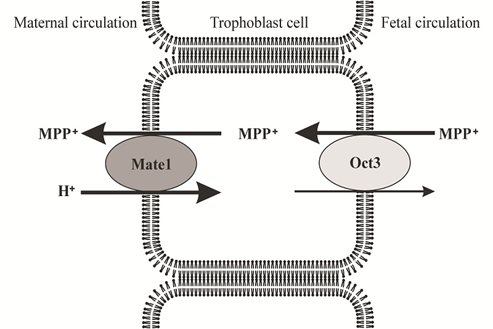
2012-03-01
In our latest paper, we describe olomoucine II and purvalanol A as inhibitors of breast cancer resistance protein (BCRP/ABCG2); when administered together with another BCRP substrate, such as mitoxantrone, synergistically potentiated cytostatic effect is achieved.
Hofman J, Ahmadimoghaddam D, Hahnova L, Pavek P, Ceckova M, Staud F. Olomoucine II and purvalanol A inhibit ABCG2 transporter in vitro and in situ and synergistically potentiate cytostatic effect of mitoxantrone. Pharmacol Res 2012;65:312-9.
.jpg.aspx)
2012-02-01
Three make company! PharmDr. Martina Ceckova, Ph.D., returns from her maternity leave to bring life to cell culture studies – welcome back :)
2011-11-01
PharmDr. Lukas Cerveny, Ph.D., a used-to-be student of our department, rejoices our team after five years of working on other projects – welcome back :)